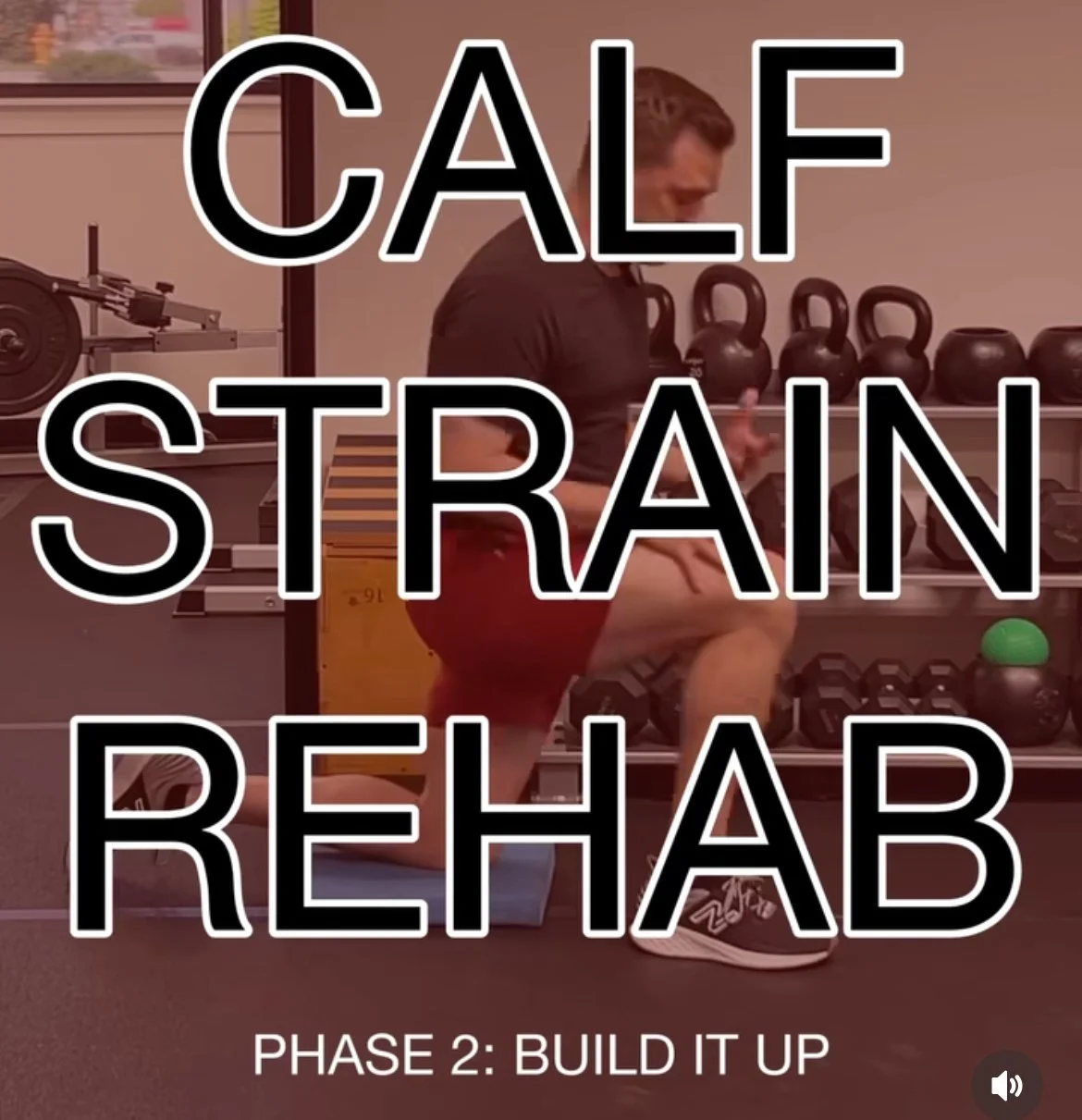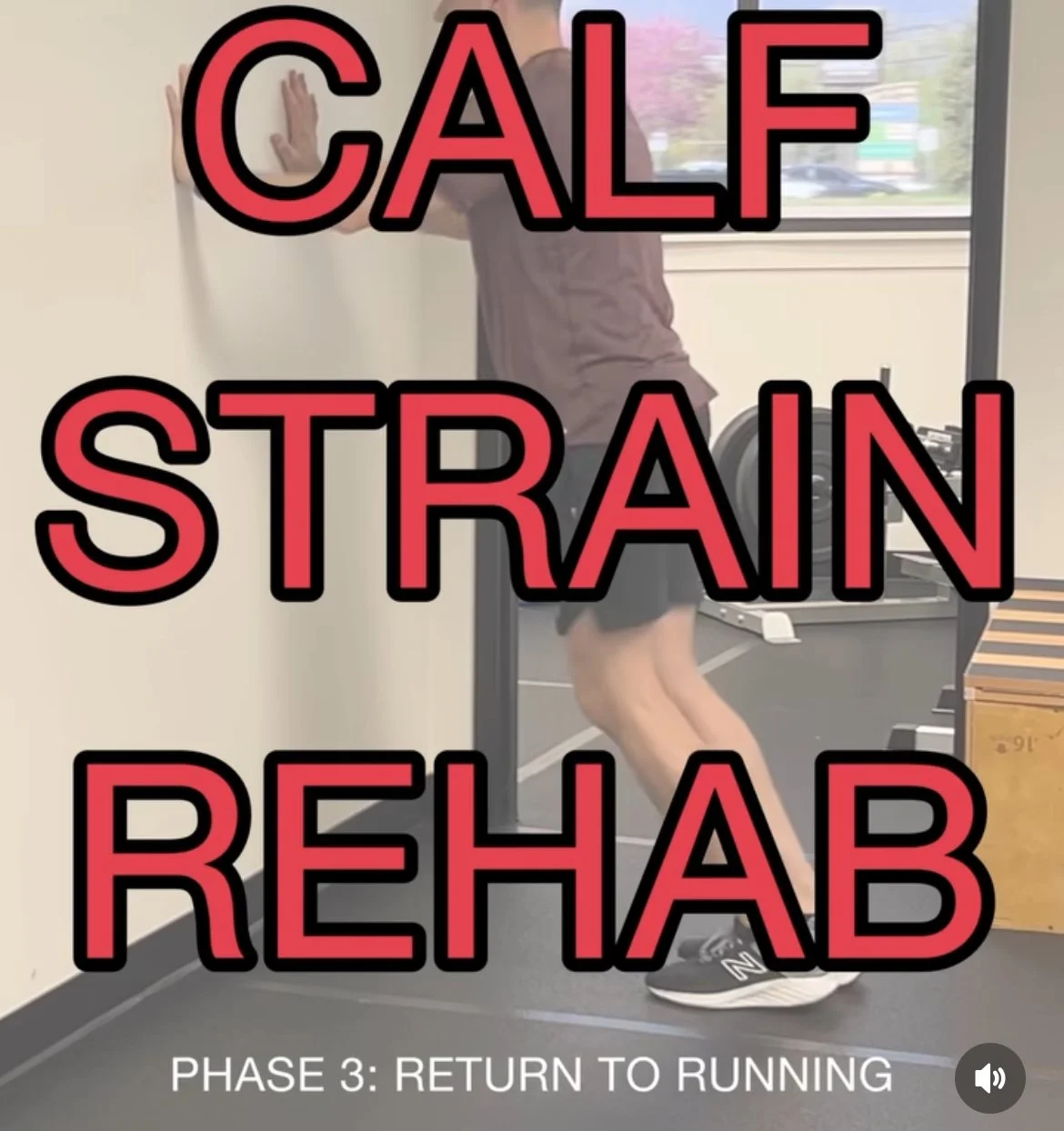From Calf Strain to the Fast Lane:
Calf Strain: Return to Running Guide
Calf strains can feel like they come out of nowhere—and often, they do. While we tend to associate these injuries with explosive efforts like speed workouts, hill repeats, or races, they’re just as likely to happen during an easy run on a random Tuesday. That’s the frustrating part. The root cause isn’t always obvious in the moment, but in many cases, it's a mix of factors like inadequate warm-up, gaps in strength or mobility, subtle training errors (too much intensity, not enough recovery), or just the wear and tear of accumulated miles.
Sometimes, it’s simply bad luck.
Regardless of how it happened, a calf strain doesn’t have to sideline you for long if it’s addressed the right way from the start. Below, I’ll walk you through our 3-phase recovery approach—designed to guide you from injury back to pain-free running, while also addressing the factors that may have contributed in the first place.
The goal isn’t just to heal—it’s to come back stronger and more resilient than before.
In this first phase, we have to calm things down and give our body time to start doing it’s work. Neglecting this step will likely delay our return to running, be patient.
After a couple of days, we need to move toward a more active rehab approach. These exercises are a great place to start and will help get you through the first week or two.
Once we are able to perform all of these exercises as outlined and we can walk without compensation, you will be ready to step up to phase 2 (coming soon).
Don’t shy away from the work. Yes, injuries suck, but ignoring them doesn’t do you any favors. Be patient, put in the time and effort, and let’s get back to running better than we ever have before.
In this second phase, it’s time to get active with our care and start building the calf back up.
These exercises will take you from the acute phase to a gradual return to running. Be patient, put in the work, and let time be your friend. The more focus you can put in during this phase, the better your return to running will go.
For most cases, this phase is 3-4 weeks. Once you can do all of this pain-free, we will progress to phase 3
In this third phase, it’s time to push forward, get stronger, and return to running, training, and competition - remember that these are 3 different levels of training.
These exercises will take you from a walk/jog progression, all the way up to race day. Continue to progress slowly and give your body time. This is the best approach for long term results and performance.
For most cases, this phase starts 4-6 weeks into your calf strain work and goes on indefinitely.
Calf strains can be frustrating—but they don’t have to turn into long-term setbacks. By following this phased approach, you're giving your body the best chance to heal, rebuild, and come back stronger. Whether your strain happened during a hard session or a chill run, it all comes down to respecting the process, doing the work, and progressing at the right pace. I know it’s not always easy to be patient, but every step you take now sets you up for a better, stronger return to running. Stick with it, don’t cut corners, and let’s get you back out there—feeling better than ever.


